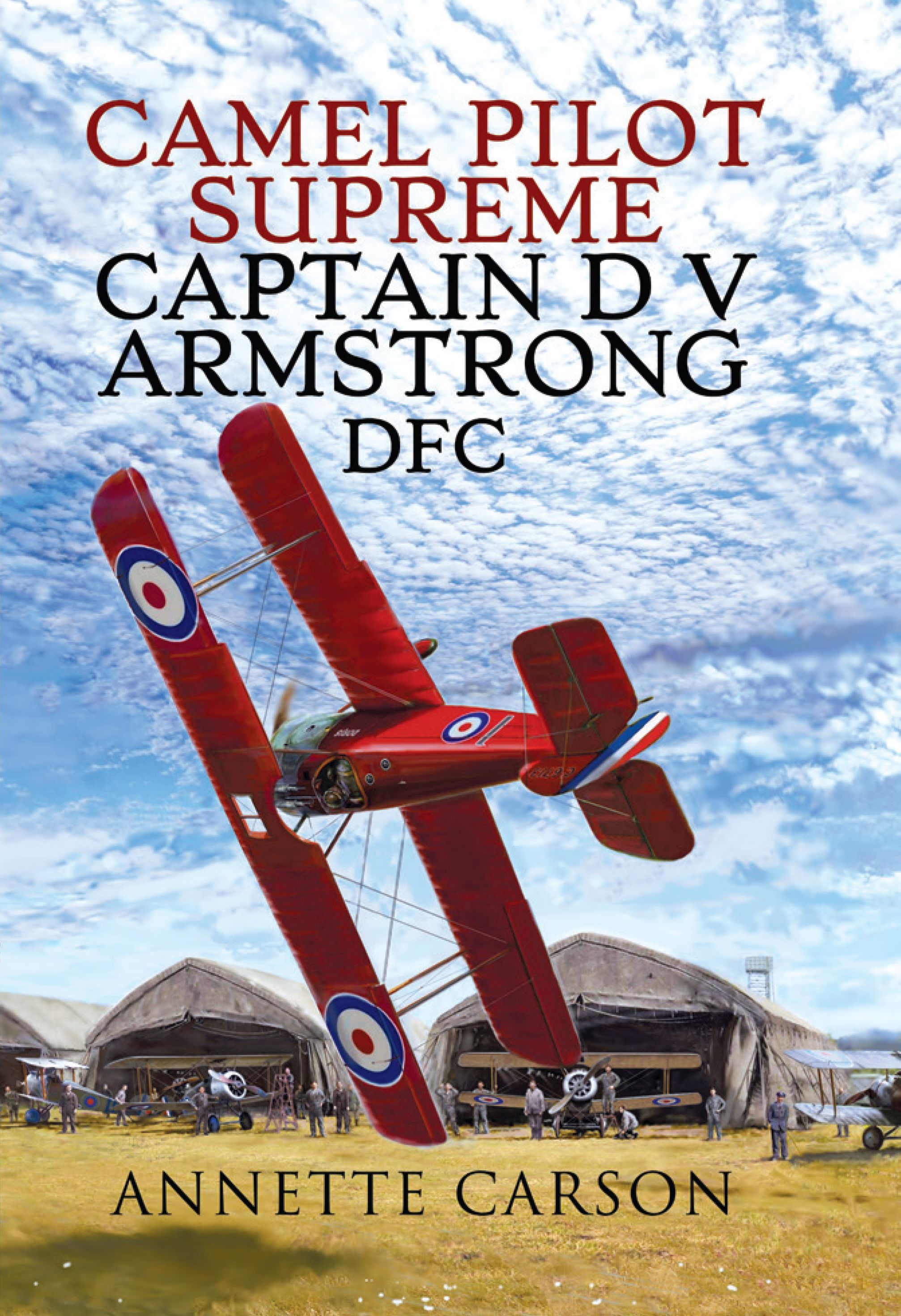
Camel Pilot Supreme: Captain D.V. Armstrong DFC - Author, Annette Carson
D’Urban Victor (D.V.) Armstrong was the British Bob Hoover of both the Western Front and the Home Defense (H.D.) Front, giving demonstrations in his all red Sopwith Camel with a smile that stirred morale. He was loved and admired by all he trained. The Camel was so tricky to fly that about 350 men died in training. In addition to fighting on the western front in France, he fought on the homefront at night defending London against the German Gotha bombers. When the war ended he was 21. He did not see 22.
This book appealed to me as both an aerobatic instructor and an amateur aviation historian. It is not just the tale of D.V. Armstrong. I learned things about WWI and aviation that were eye openers, and got a peek into how aerobatics developed. This book also makes the case that what we know of as the Immelman Turn maneuver really should be called the Armstrong turn.
Annette Carson is becoming quite the historian concerning the history and development of aerobatics. Three of her nine books are on aerobatics. Flight Unlimited and Flight Unlimited 95 are co-written with Swiss aerobatic champion Eric Müeller. I highly recommend the third book, “Flight Fantastic: The Illustrated History of Aerobatics, printed in 1986.
The British Royal Flying Corp., which had pilots from all the British colonies as well as Britain. D.V. Armstrong was from South Africa. DFC stands for Distinguished Flying Cross. In Britain military people have their awards appended to their names, for example - Air marshal John Salmond GCB CMG CVO DSO & Bar
Camel Pilot Supreme – Captain D.V. Armstrong DFC, does a good job of getting hard into the historical and forensic details while telling a compelling story about an amazing individual. Annette also takes time to set the stage, giving enough background so that each development or achievement is understood. Imagine being in a world where flying is so new that nothing is known, and that all the players are groping around in the dark while trying to stay alive.
WWI, which took place from summer 1914 to November 11, 1918, developed very fast and had different phases. It started with horse cavalry and infantry charges showing Napoleonic flash and bravery, with troops dressed in colored uniforms and white gloves, carrying sabers. It ended with trenches, mud, disease, rats, gas, machine guns, endless artillery barrages that drove men mad, tanks, and the Red Baron. That’s a lot for four years.
Everyone involved were always just a step behind the war developments. They had to improvise as they went along. The first six months of the war, for example, were horrific; the casualties were approaching one million. Yes, that’s Million with an “M.”
Against this backdrop is the development of aviation. 1914 started with delicate aircraft barely more advanced that the Wright Brothers. 1915 brought the beginnings of dedicated fighter aircraft, though they still used wing warping for roll control (!) and only had 80hp to 110hp engines. German pilots Max Immelman and Oswald Boelcke tore up the skies in “the Fokker Scourge” because they were the in the first squadron with forward firing machine guns shooting through the propeller, with an interrupter gear preventing them from shooting their propellers off.
1916 and 1917 is when we see the dedicated advanced fighter designs. The French and the British started using the Nieuport 16’s, 17’s, SPAD’s and the Sopwith Camel, while the Germans were using the Albatross’s and eventually the Fokker Triplane and the FokkerDVII. Now we see aircraft that initially have the performance of a 150hp Citabria (with two guns and all the ammunition), working up to the performance of a Super Decathlon (with two guns and all the ammunition).
The summer of 1916 and on is where young DVA begins to shine. He initially flew the Moraine Bullet in France, which was horrible to fly and which killed almost half of his squadron before they were withdrawn. It made him good. He then flew the Nieuports, where he did well and was becoming known.
Next he soared in two endeavors; becoming a surgeon with the Camel and employing the Camel at night protecting London against the German Gotha bombers, in all kinds of ugly weather. It was during these operations where he was awarded the Distinguished Flying Cross and became a flight leader and instructor.
The engine on the Camel was a 130-hp rotary, meaning a radial engine that rotated with the propeller. The gyroscopic forces were huge. Annette says, “The key to understanding the Camel was its combination of instability and precession, which aided its lighting-fast right-hand turn… Test pilot and aerobatic specialist Neil Williams agreed with many others when he described the Camel as ‘a gyroscope with wings.’"
Grenville Manton, RFC lieutenant and later aviation expert, who had seen D.V. Armstrong’s ground-hugging aerobatic displays, and who collected tales about him from others, said, "I remember, too, Sir Christopher Quintin Brand saying to me that Armstrong was, in his opinion, the finest and most accomplished Camel pilot he had ever met. Major Oliver Stewart, who knows all there was to know about a Camel – for he did all the special tests on it at Martlesham when it was a suspect, dreaded and loathed by many – agrees that no other pilot could fly the little beast with such superb judgment and accuracy as Armstrong did. As Stewart says, the fellow had the hands of a surgeon.”
Link to Amazon for more information about this book.

